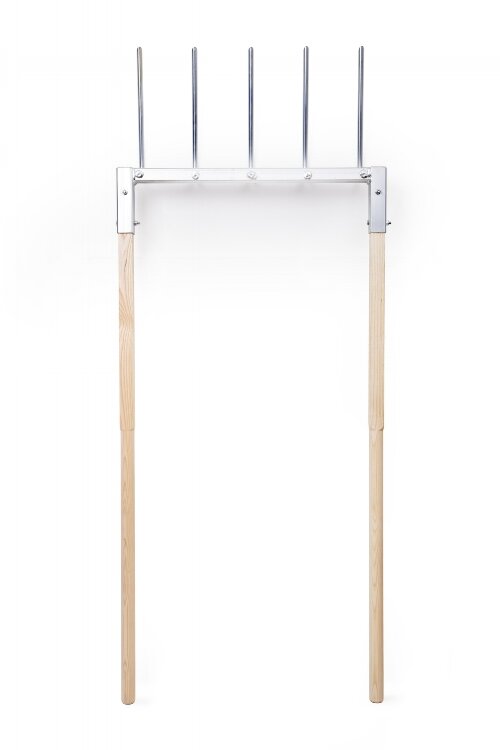Get Growing: Soil, it's not just dirt
The place you want your soil to be is ioam, but we can’t all be loam, so we do our best and add compost. Soil Texture Triangle from Natural Resource Conservation Service
Tomatoes and squash are ripening, the weeds are growing, and the bugs have arrived, but it’s always a good time to talk about soil. Soil is made up of sand, silt and clay particles along with organic matter (decomposing leaves, dead soil life, etc.). Soil is also an ecosystem. Healthy soil is full of life. BILLIONS of living things can exist in just a teaspoon of healthy soil from tiny bacteria to enormous (compared to bacteria) earthworms.
When we think about soil and gardening, there are a few things that come to mind first:
Soil composition - How much sand, silt and clay is in your soil? Soils are classified by the amount of sand, silt and clay in the soil. This is important to gardeners because sandy soil dries out quickly and clay soil doesn’t drain. (The soil triangle above helps you get an idea of the amounts of sand, silt and clay in different soils.) You can make a mud milkshake with Farmer Amanda to figure out how much sand, silt and clay is in your soil.
N-P-K - Nitrogen-Phosphorus-Potassium - These are the major elements plants need to be healthy, but they also need small amounts of other things which we call micronutrients. Soil tests will tell you how much of each element is in your soil. N-P-K is also represented by the three numbers you see on fertilizer bags.
Instead of thinking about soil as a complex home for lots of living things, we tend to think of it more like a cake ingredient: for more vegetables mix dirt + nitrogen + phosphorus, etc. When we do this (and dump chemical fertilizer on the soil), we’re ignoring (at best) and killing off (at worst) the living things that can help our plants grow and fight off disease.
These are just a few of the millions of cool things in the soil that help our veggies grow.
Mycorrhizae - This is the science word for the root-like hairs of fungi found in soil. There is so much we don’t know about fungi! Sure, some of it can kill our tomatoes, but the mycorrhizae of some fungi connect with plants and basically become extensions of the plant, moving through the soil collecting water and nutrients to share with the host. Plants connected to mycorrhizae are better able to withstand droughts.
Bacteria - Some soil bacteria take nitrogen from the air all around us and put it into the soil so the plants can use it. This is FREE FERTILIZER.
Earthworms - These charismatic critters eat organic matter and poop out fertilizer. Their tunnels break up compacted soil making it easier for air and water to reach plants’ roots.
So maybe you’re thinking you have enough to do in the garden now without having to figure out how to manage a complex soil ecosystem, too. Fair enough, but here’s the truth, building good soil isn’t hard and it can save you money. Here are things to consider:
Broad forks help loosen soil without turning it over. Digging forks work well for this, too. Image from the Market Gardener website.
Compost - Yes you can buy it, but you can also make it yourself. Compost adds organic matter to the soil, helps the soil hold water, and is kind of like yogurt for your dirt. You know, you eat yogurt to add good bacteria to your gut, and compost does the same thing for soil. It also has tiny amounts of that N-P-K that we’re looking for.
Use organic fertilizers - Fertilizers approved for organic production contain smaller amounts of N-P-K than chemical fertilizers and tend to release their nutrients more slowly. Chemical fertilizers can poison your soil life. They also tend to run off into lakes and streams and cause pollution.
Plant cover crops - A cover crop is something you plant in order to add nutrients or hold the soil in place. Legumes (your peas and clovers) make little homes in their roots for soil bacteria to live. These are some of the bacteria that pull nitrogen out of the air for the plants. When cover crops rot, they feed other soil life, and they keep the ground cool and covered making your complex soil ecosystem healthier and happier.
Take care with tilling - Rototillers are very cool tools, but flipping all that soil around really bugs (and kills) the soil life. Think about using a tiller to break up an area when you’re starting a garden or have an old garden you need to get back into shape. We use planting forks and tool called a broad fork to help make the soil looser and more airy without flipping it all around.
Whew! That’s just an overview. We can be dirt nerds and go really deep with the soil (he, he), but we hope this gives you the basics. If you want to dig a little deeper, consider these resources:
Building Soil for Better Crops, SARE - A free book to help you learn about soil.
Cover Crops for Alabama, Alabama Cooperative Extension
Symphony of the Soil, film, it’s a movie about dirt. Maybe you can find it on Prime or Netflix?

